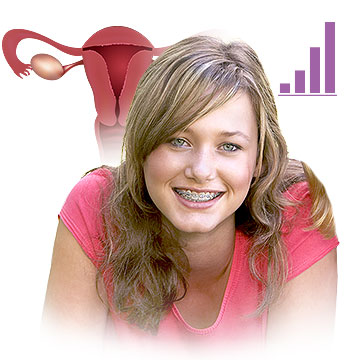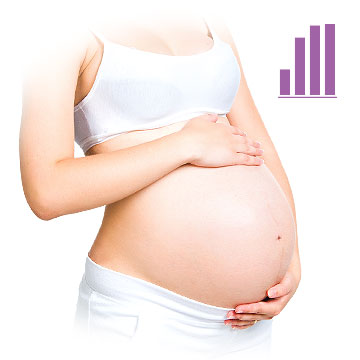The effects of progesterone extend to a number of organs and structures of various body systems, from the reproductive organs to the kidneys, liver, and heart. Accordingly, the hormone is a key contributor to everyday wellness.
The stage of reproductive life a woman is in will greatly influence the amount of progesterone she will produce and to what quantity. Because progesterone has such an important role in women's overall health, it is important to understand the hormone's natural fluctuations through life.
Progesterone during Puberty

Puberty marks the initiation of reproductive years, usually beginning between the ages of 8 and 14. At this time, increased production of sex hormones guide each stage of pubertal development. Normally, progesterone is present in girls before puberty at very low levels, but with menarche, the first menstrual period, progesterone production soars.
In general, the regularity of menstrual cycles and hormonal fluctuations should begin to stabilize within the first few years. However, recognizing unusual patterns early prevents major health concerns from arising later.
Progesterone during the Menstrual Cycle

Progesterone is one of the few reproductive hormones that work together to actively support the health of female reproductive system, including the regularity of the menstrual cycle.
During the second half of the menstrual cycle, progesterone levels increase as it is secreted from the corpus luteum to build and maintain the uterine lining. The hormone levels released at this time also prohibit uterine contractions that would cause egg rejection. If there is no implantation, the lining is shed in the next period.
Continue reading about the hormone's extensive involvement in healthily regulating the menstrual cycle.
Progesterone and Pregnancy

After conception, high progesterone levels are responsible for maintaining the uterine lining to nourish the fertilized embryo, conserving the gestation. Throughout all pregnancy stages, the hormone continues to stimulate changes in the mother's body to support fetal development and prepare for newborn care postpartum.
Find out more about progesterone's instrumental responsibility in maintaining a pregnancy to term.
Progesterone and Menopause

As a woman enters perimenopause, hormone levels will fluctuate erratically, causing irregular ovulation and irregular periods. A year after the cessation of menstruation is the official date of menopause. From this date onward, she is postmenopausal and will generally not ovulate nor menstruate.
Because ovulation is the sole way to produce the majority of a woman's progesterone, anovulatory cycles during perimenopause and cessation of ovulation with postmenopause often cause a progesterone deficiency.
Discover more about progesterone and menopause as well as signs and symptoms associated with a hormonal imbalance.
Sources
- Harvard Health Publications. (2017). Perimenopause: Rocky road to menopause. Retrieved October 5, 2017, from http://www.health.harvard.edu/womens-health/perimenopause-rocky-road-to-menopause
- Hormone Health Network. (n.d.). What is Progesterone? Retrieved October 4, 2017, from http://www.hormone.org/hormones-and-health/hormones/progesterone
- NHS. (2015). Girls and puberty Q&A. Retrieved October 4, 2017, from http://www.nhs.uk/Livewell/Sexandyoungpeople/Pages/Girlspuberty.aspx
- The North American Menopause Society. (2010). Changes in Hormone Levels. Retrieved October 5, 2017, from https://www.menopause.org/for-women/sexual-health-menopause-online/changes-at-midlife/changes-in-hormone-levels
- Wyatt, A. (Ed.). (2017). Help Your Kids with Adolescence: A No-Nonsense Guide to Puberty and the Teenage Years. New York: Penguin Random House. Available from Google Books.
